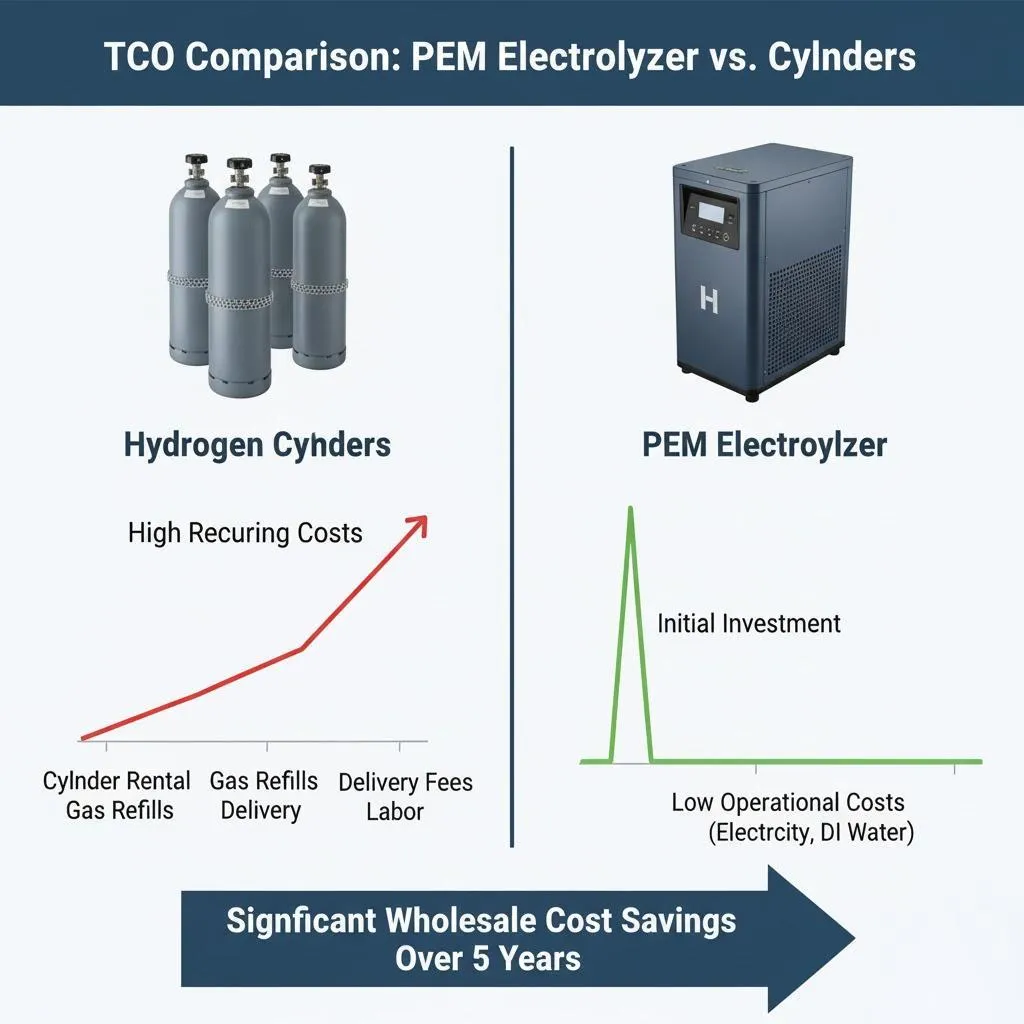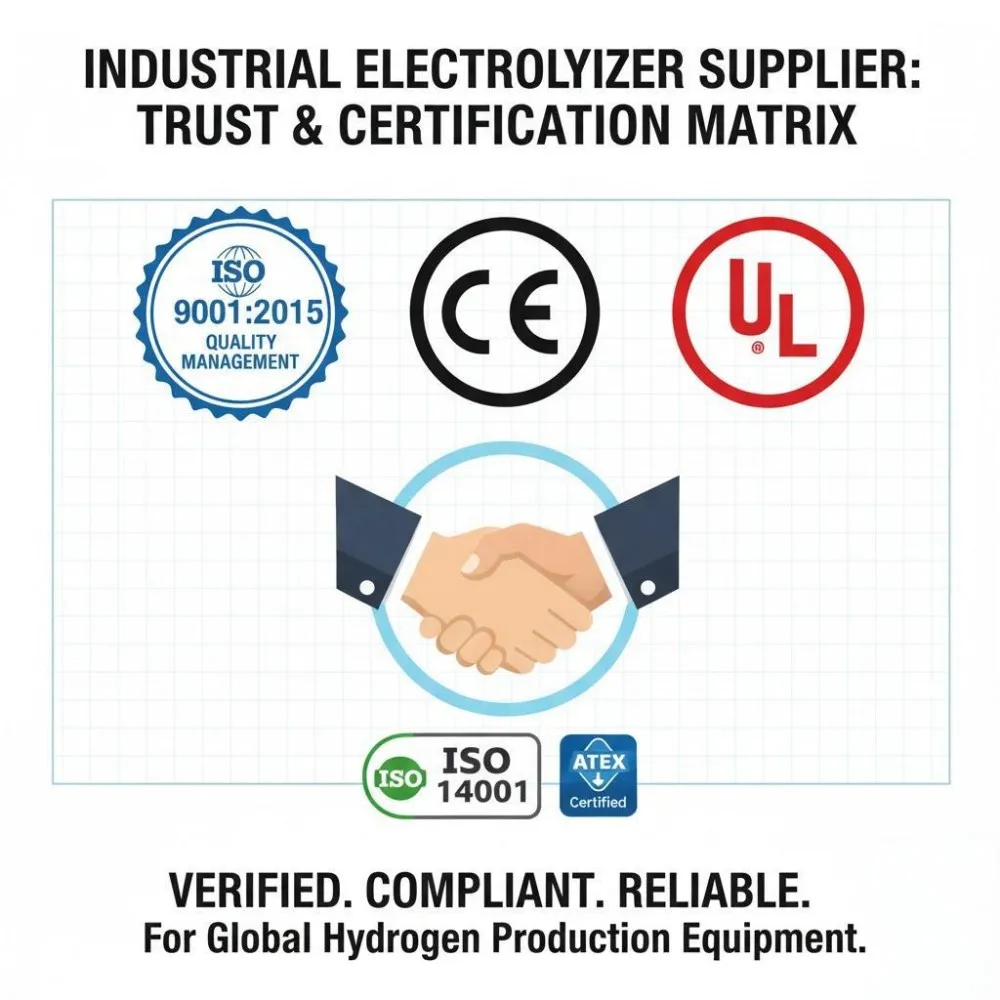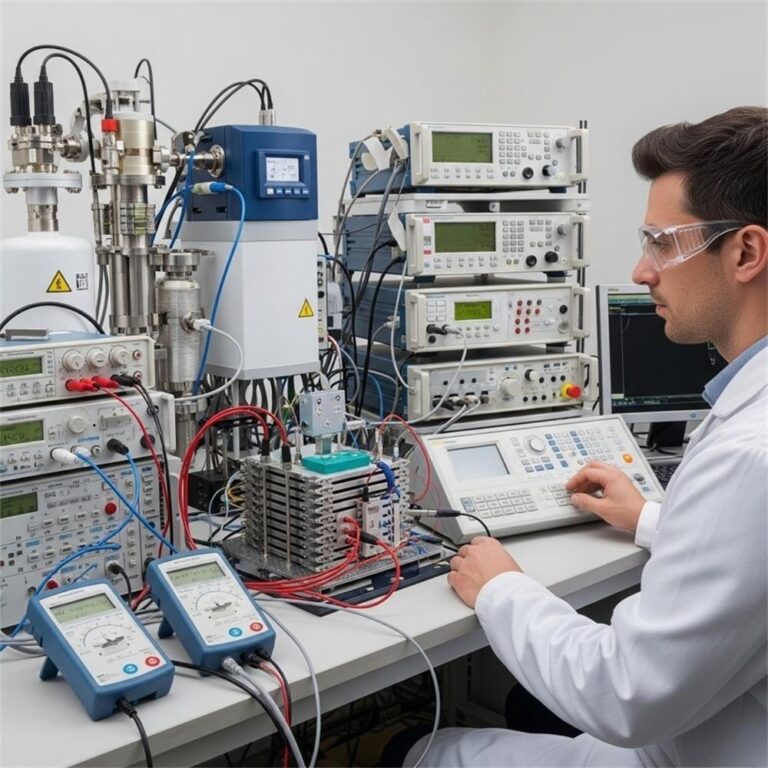Discover the latest advancements in PEM electrolyzer stack technology for hydrogen generation. Learn about performance improvements, renewable energy integration, and future trends in industrial-scale green hydrogen production.
I. Introduction to PEM Electrolyzer Stack Technology
Proton Exchange Membrane (PEM) electrolyzers are at the forefront of green hydrogen generation. Unlike traditional methods of producing hydrogen—often reliant on fossil fuels—PEM technology utilizes renewable electricity to split water molecules into hydrogen and oxygen. This clean process positions PEM electrolyzers as a cornerstone of the global transition to sustainable energy.

What is a PEM Electrolyzer Stack?
At the heart of a PEM electrolyzer system lies the PEM electrolyzer stack, a modular assembly of electrochemical cells where the actual water splitting occurs. Each cell consists of a membrane electrode assembly (MEA) placed between bipolar plates, facilitating the electrochemical reaction under the influence of direct current (DC) electricity.
How It Works:
- Water is introduced at the anode side.
- Electric current splits water into protons (H⁺), electrons (e⁻), and oxygen (O₂).
- Protons migrate through the proton exchange membrane.
- Electrons travel via an external circuit.
- At the cathode, protons and electrons combine to form hydrogen gas (H₂).
This compact and highly efficient process differentiates PEM technology from alkaline (ALK) and solid oxide (SOEC) electrolyzers, which have limitations in system response time, scalability, and integration with intermittent renewable sources.
II. Latest Technological Developments in PEM Stacks (2023–2024)
1. Advanced Membrane Materials
Recent breakthroughs in ionomer chemistry have resulted in membranes with:
- Higher proton conductivity
- Lower gas crossover
- Better thermal stability
These features have dramatically increased the efficiency and safety of PEM stacks.
2. Catalyst Innovations
PEM stacks traditionally rely on precious metals like platinum and iridium, which contribute significantly to costs. However, 2023–2024 has seen the rise of:
- Nanostructured catalysts with enhanced surface areas
- Non-noble metal alternatives
- Recyclable catalyst layers to reduce waste
These advances improve cost-effectiveness while maintaining performance.
3. Stack Architecture & Manufacturing
Modern PEM stack designs now use:
- Additive manufacturing (3D printing) for faster prototyping
- Integrated cooling systems for thermal management
- Lightweight composite materials to reduce bulk
Case Study: A 2024 pilot project in Germany demonstrated a 30% reduction in capital costs and a 15% increase in hydrogen output using these next-gen stack configurations.
III. Performance Improvements in Modern Hydrogen Generators
1. Higher System Efficiencies
PEM electrolyzers now boast system efficiencies of 75–85%, compared to previous averages of around 60%. This improvement comes from:
- Optimized MEAs
- Real-time system diagnostics
- Better water management systems
2. Longer Lifespans
Durability has also improved, with lifetimes exceeding 60,000 hours under controlled conditions. Enhancements include:
- Advanced sealing techniques
- Corrosion-resistant materials
- Self-monitoring algorithms
3. Industrial Scalability
PEM technology is now being scaled to megawatt (MW)-scale projects, enabling large-volume hydrogen production for sectors like:
- Steel manufacturing
- Chemical synthesis
- Power grid balancing
4. Lower Operational Costs
Improved designs reduce maintenance cycles and downtime, increasing availability and reducing cost per kg of hydrogen.
IV. Key Applications of PEM Electrolyzer Technology
PEM electrolyzers are versatile, catering to multiple industrial needs:
1. Industrial Hydrogen Production
Used in refineries, fertilizer plants, and petrochemical industries for clean hydrogen generation, replacing steam methane reforming (SMR) processes.
2. Energy Storage
Hydrogen can be stored and reconverted into electricity during peak demand—ideal for grid balancing and storing surplus solar/wind power.
3. Transportation Fuel
PEM electrolyzers are integral to hydrogen fueling stations, supporting fuel cell electric vehicles (FCEVs) for long-haul transport and public transit.
4. On-Site Manufacturing
Manufacturers are increasingly deploying on-site hydrogen generators to meet internal process needs while cutting carbon emissions.
V. Integration with Renewable Energy Systems
One of PEM technology’s greatest strengths is its seamless integration with renewable energy sources.
1. Smart Grid Compatibility
Advanced control systems allow for:
- Dynamic load adjustments
- Automated grid synchronization
- Predictive energy usage analytics
2. Handling Intermittent Power
PEM stacks respond within seconds to power fluctuations, making them ideal for use with:
- Solar PV installations
- Wind turbines
3. Hybrid Configurations
Systems combining battery storage, PEM electrolyzers, and renewables are emerging as optimal energy hubs for off-grid and microgrid applications.
4. Energy Optimization
Operators can schedule hydrogen production during low-tariff hours or peak renewable output, maximizing ROI and sustainability.
VI. Future Trends in PEM Electrolyzer Stack Development
1. Cost Reduction Roadmaps
Global initiatives aim to bring the cost of green hydrogen below $2/kg by 2030. Strategies include:
- Mass production of electrolyzer stacks
- Supply chain localization
- Tax credits and subsidies
2. Emerging Markets
Countries like India, Brazil, and the UAE are ramping up investments in green hydrogen infrastructure, creating new export and manufacturing opportunities.
3. Government Incentives
Programs like the U.S. Inflation Reduction Act and the EU’s Green Deal are offering:
- Investment grants
- Feed-in tariffs
- R&D funding
4. Next-Gen Materials
Expect to see:
- Graphene-enhanced membranes
- AI-powered diagnostic systems
- Modular plug-and-play stack configurations
These trends promise not only efficiency but also greater adoption and innovation.
VII. Conclusion & Call to Action
PEM electrolyzer stacks are no longer a niche innovation—they’re a mainstay in modern green hydrogen generation. From improving efficiency and reducing costs to enabling smart integration with renewables, the evolution of this technology is pivotal for a decarbonized future.
At Hele Titanium Hydrogen, we specialize in delivering state-of-the-art PEM electrolyzer solutions tailored to your industrial needs.
👉 Contact our hydrogen technology experts today to discuss your PEM electrolyzer stack requirements.
Frequently Asked Questions (FAQs)
1. What is a PEM electrolyzer stack?
A PEM electrolyzer stack is a collection of electrochemical cells that use a proton exchange membrane to produce hydrogen from water using electricity.
2. How efficient are modern PEM electrolyzers?
Modern PEM electrolyzers achieve efficiencies between 75–85%, depending on design and operating conditions.
3. What are the main uses of PEM electrolyzers?
They are used for industrial hydrogen production, renewable energy storage, transportation fuel, and on-site hydrogen generation.
4. How do PEM electrolyzers compare to alkaline electrolyzers?
PEM systems offer faster response times, compact designs, and better compatibility with renewable sources but are typically more expensive upfront.
5. Are PEM electrolyzers suitable for off-grid applications?
Yes, their quick start-up and scalability make them ideal for off-grid and hybrid renewable setups.
6. What’s the lifespan of a PEM electrolyzer stack?
With current materials and proper maintenance, PEM stacks can last over 60,000 hours of operation.







